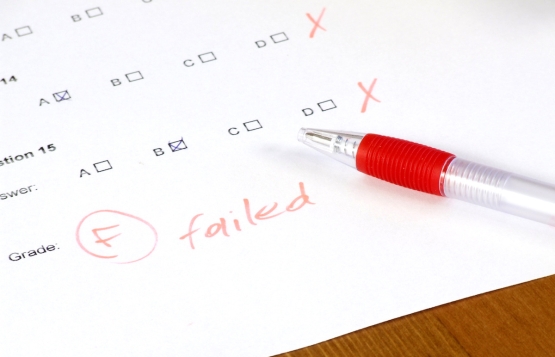As state and district leaders face the challenges posed by Covid-19, safely reopening schools within the current budgets is first, second, and third on their priority list. At the same time, most students will start their schooling in the fall further behind than they have ever been, with the most disadvantaged among them very likely experiencing the greatest learning loss.
How can leaders address logistical issues of transportation, social distancing, hybrid and/or staggered learning schedules, and at-risk students and teachers, while not losing sight of the learning goals of schooling? In The Return, the Johns Hopkins Institute for Education Policy (IEP) and Chiefs for Change articulated powerful strategies to effect system-wide improvement—knowing that many will take time and collective effort to implement. What could be done rapidly to accelerate student learning, whether in face-to-face or remote learning models?
One of us, Johns Hopkins University’s Bob Slavin (designer of the well-known Evidence for ESSA) is well versed in evaluating educational interventions. Bob’s research has led him to the conclusion that tutoring is one of the most powerful interventions of all. In his work, “tutoring” refers to one-to-one or small-group instruction. Tutoring may involve one teacher or one teaching assistant working with one student, or one teacher or teaching assistant working with a very small group of students, usually two to four at a time.
In The Return, IEP and Chiefs for Change wrote about reconfiguring school staffing models to distribute instructional expertise more effectively, by (for instance) enabling at-risk teachers to remain at home, where they provide virtual instruction and/or support for students’ social and emotional well-being.
Tutoring, whether virtual or in school, could leverage such innovative models as part of a reconfigured and quite promising instructional design. Indeed, well-structured tutoring programs can produce gains in reading or math that are equivalent to about five months of learning beyond students’ ordinary progress.
In math, recent meta-analyses from Slavin and his colleagues of the best research on tutoring shows very positive outcomes: Tutoring to small groups in elementary math showed an intervention effect size of 0.30—a much stronger positive impact than any other single math intervention, including traditional strategies such as professional development for teachers. The numbers of rigorous studies in some categories of tutoring were not large, so these findings must be interpreted with caution, but it is important to note that, while all forms of face-to-face tutoring by paid adults had quite positive impacts on achievement, the outcomes were highest for one-to-small group approaches.
Similarly, in English language arts, Slavin and his team also conducted a meta-analysis of the most rigorous research findings of a range of interventions. And once again, tutoring was—by a substantial margin—the most effective overall. In this case, the findings for one-on-one tutoring were startling: The results from forty-six studies of one-to-one tutoring had a mean effect size of +0.41, or about five additional months of learning beyond what students ordinarily learn.
These gains are not restricted to more socio-economically advantaged students. Nearly all tutoring studies have been done with disadvantaged students.
More importantly, tutoring is a real-world intervention that has passed muster in the public arena. In Maryland, for example, Governor Larry Hogan very recently announced the state’s intention to invest $100 million in tutoring programs as part of the educational response to Covid-19. The funds are “for local school systems that implement tutoring and learning programs designed to help students in need.” The announcement cites the fact that “research [has] shown that the rate of learning gain can be improved with intensive tutoring.” Across the Atlantic, the United Kingdom and the Netherlands have announced similar investments of $1.24 billion and $278 million, respectively, in programs of which tutoring is an integral part.
Given the strong outcomes found in research on tutoring programs, leaders in the United States should follow the UK and the Netherlands in supporting national funding for tutoring programs. One strategy might be to introduce tutoring as a means of providing meaningful jobs to recent college graduates, who are entering the work force during a recession. But given the Covid-19 learning slide and its pernicious impact on America’s most vulnerable students, it is imperative that state and district leaders work towards standing up their own programs, in advance of any possible federal effort.
Slavin recently addressed how such an initiative in tutoring might be inaugurated:
The answer could be to build on organizations that already exist and know how to recruit, train, mentor, and manage large numbers of people. The many state-based AmeriCorps agencies would be a great place to begin, and in fact there has already been discussion in the U.S. Congress about a rapid expansion of AmeriCorps for work in health and education roles to heal the damage of Covid-19. Other national non-profit organizations such as Big Brothers Big Sisters, City Year, and Communities in Schools could each manage recruitment, training, and management of tutors in particular states and regions.
Tutoring also addresses a second critical problem in American education: our habitual practice of remediation. As one of us, David Steiner, recently affirmed, this effort—deeply demoralizing to students—just doesn’t work. Well intentioned teachers try to “meet students where they are,” but in trying to teach them all that they missed, are unable to bring them anywhere close to grade level work. Tutors, by contrast, can focus on the absolutely critical skills and knowledge that give students accelerated access to grade-level material. This concentrated effort will be compounded where school districts have adopted high-quality instructional material. Such curricula engage students with rigorous materials that are on, or sometimes even slightly above, the level of traditional grade-level content.
Tutoring also helps with an unfortunate but ubiquitous problem: Teachers who are given high-quality instructional materials are often tempted to water their content down or disregard it altogether. For example, 40 percent of teachers whose schools have adopted Eureka Math—a highly-rated math curriculum—water it down whenever they believe it to be too challenging for their students. Tutoring offers a counterweight, in which tutors can reassure teachers and equip students with the scaffolding and entry-skills they need to manage their classwork. In this way, tutoring could be effectively integrated with the school’s math and ELA curricula to achieve still greater leverage on student learning.
There are no “silver bullets” at the ready to close achievement gaps and substantially raise the performance of U.S. K–12 students. School systems are complex and imperfect. In addition to having to cope with vastly unequal background social-economic conditions, American educators work in a fragmentary system in which key elements have not been designed to work together. In the face of these realities, which of course pre-date and will post-date Covid-19, the health crisis adds a potentially devastating blow to the already low learning gains of so many children.
Of the single interventions that could be instituted at relatively modest cost and with quite rapid speed, tutoring stands out: The research base for its effectiveness is unusually consistent and strong, the practice is internationally endorsed, and there are many college graduates who will soon look for meaningful employment. The crisis of Covid-19 should and must find us attentive to the physical and mental health of our students—but let’s not forget that academic learning is still the core responsibility of all educators. Tutoring could help mitigate what would otherwise be yet another devastating outcome of our current crisis.





